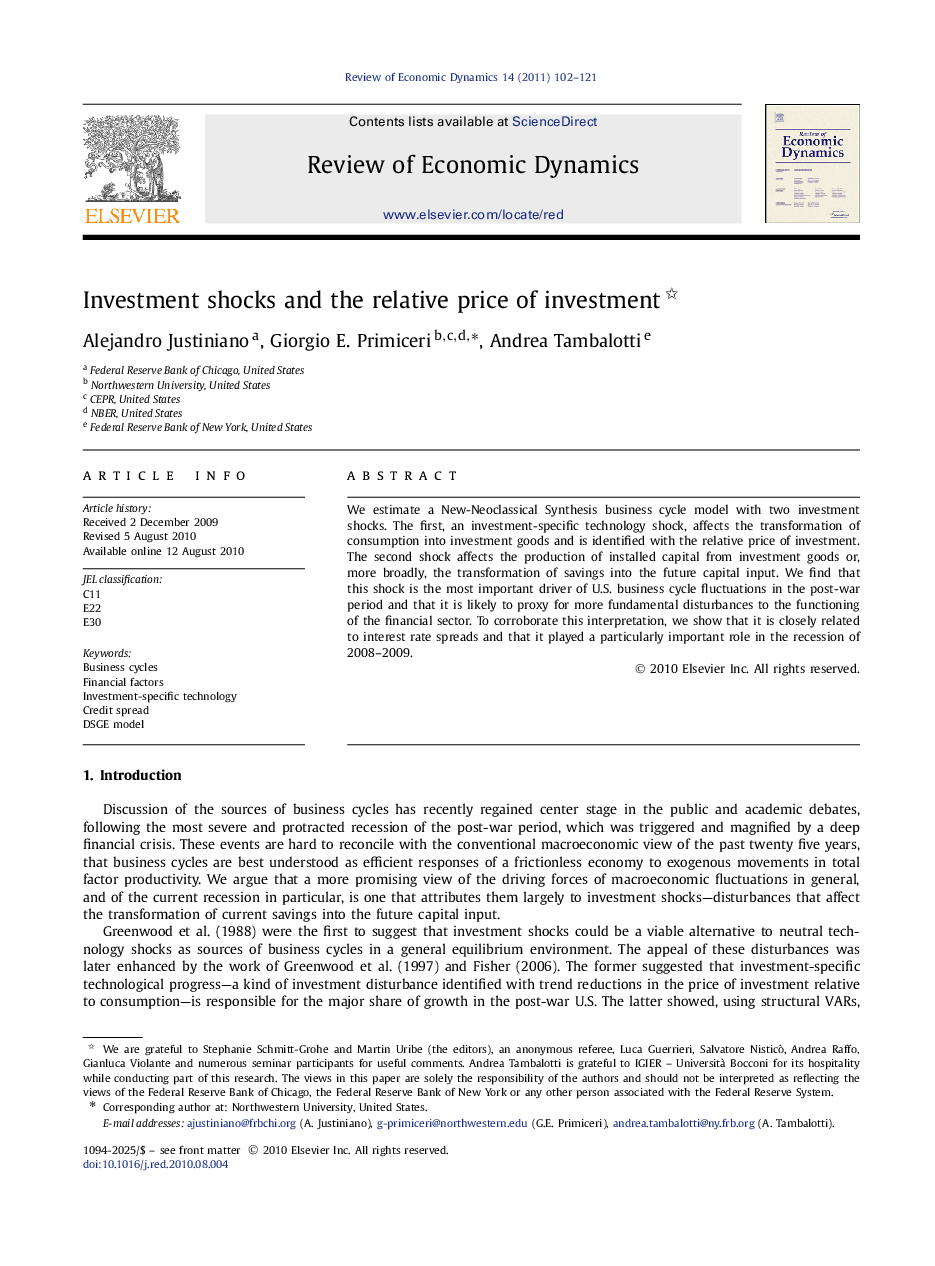| Article ID | Journal | Published Year | Pages | File Type |
|---|---|---|---|---|
| 986404 | Review of Economic Dynamics | 2011 | 20 Pages |
We estimate a New-Neoclassical Synthesis business cycle model with two investment shocks. The first, an investment-specific technology shock, affects the transformation of consumption into investment goods and is identified with the relative price of investment. The second shock affects the production of installed capital from investment goods or, more broadly, the transformation of savings into the future capital input. We find that this shock is the most important driver of U.S. business cycle fluctuations in the post-war period and that it is likely to proxy for more fundamental disturbances to the functioning of the financial sector. To corroborate this interpretation, we show that it is closely related to interest rate spreads and that it played a particularly important role in the recession of 2008–2009.
